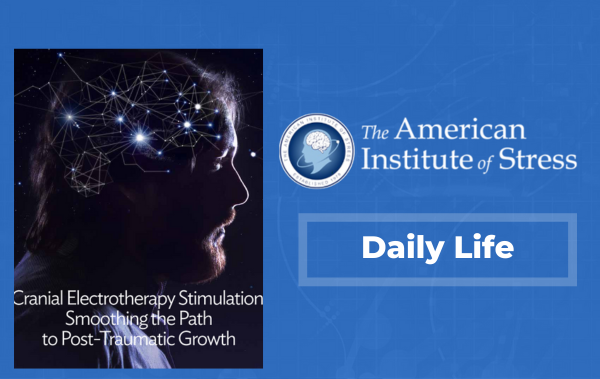Your one-stop shop for finding focus and calm — anytime, anywhere.

Mindfulness is not some new trend — it’s a practice that is innate. If you need to concentrate — on a deadline, a putt, a conversation — you are practicing mindfulness. Any time you tune into your thoughts to focus on the here and now, that’s just what you’re doing. And doing it has some major benefits for everything from anxiety to, well, accomplishing that goal you had in mind.
That’s not to say it’s easy. Nearly half of us spend the bulk of our waking hours thinking about something other than what we’re actually doing, according to Harvard researchers. When your brain is used to juggling five things at once, it can feel foreign to shut off all those competing thoughts and simply live in the moment.
“The practice is in some ways even more difficult for us as parents,” adds Emily Horn, a certified mindfulness coach in Asheville, NC. “Many days we would love to find those silent moments with no distractions. Keep at it though. If five minutes of mindfulness feels pie in the sky, adjust it to one to two daily minutes. If you forget one day and remember the next, perhaps by the end of the week you’ll meet your overall goal.”
It’s worth the effort. Mindfulness has been shown to have powerful effects in numerous studies, like one in the journal Pain Medicine that found mindfulness exercises were able to lower sensations of pain in people with chronic health conditions. Other research from scientists at Duke University found that mindfulness improves people’s mental health by lessening emotional reactivity in stressful situations and helping people better regulate their behavior.
“Over the last decade, mindfulness has been researched extensively,” says Horn. “Research shows it supports better sleep, less stress, and an increase in calm moments.” Plus, she adds, “How many times have you heard your kid say something or do something and you see [negative aspects of] yourself? With mindfulness, you have more understanding and heart space to work with all the stuff you’d rather not hand down to your kids.”
Mindfulness is for anyone, really, but it’s especially applicable to those living a maxed-out existence: The more stress you’ve got, the more you need mindfulness.
To start, forget about finding the “perfect” moment to practice mindful behavior, says Horn. “You can sit in the car and meditate,” she says. “You can stand in the checkout line at the grocery store and remember that your body is breathing. You can watch the kid play soccer and feel the air on your skin.” All qualify as mindful experiences.
For more specific strategies to build mindfulness, check out these five exercises, suggested by Horn and adapted from The American Institute of Stress. They take five minutes or less and can transport your headspace from frazzled to calm.
Play “There Is”
This is a mindfulness exercise for the whole family, says Horn. You can play it sitting around after dinner or in the car on a family trip. The goal is to put parents and kids in touch with their feeling by simply saying out loud wheat they’re doing and feeling (i.e., what “there is”) without judgment. “Start with, ‘There is seeing. There is hearing. There is breathing,’” says Horn. Then describe each other: “You might say, ‘There is Daddy being Daddy, there is Mommy being Mommy—there is people being happy, sad, mad, and silly.’” The idea is to capture what you are experiencing at a basic level, Horn explains. “It’s simple and it settles us,” she adds.
Take a Sensory Walk
Head into the woods or around your neighborhood for a few minutes. Rather than letting your mind wander, pick one or two things to focus your thoughts on. For instance:
- Listen: Hear the sounds of nature — leaves crunching, branches rustling, horns honking, children laughing.
- Feel: Notice if you’re sweating or cold, how the wind feels in your hair, what the fabric of your shirt is like.
- Smell: Whether you’re in a city or out in the country, different places have different smells, but we almost never stop to notice them. Breathe in the scent of cut grass, local restaurants, fresh garden plantings, and more.
- Look: Every season has its own colors. Make note of the green grass, leaves turning, fresh snow, or new shoots of spring. See the color of the sky; pay attention to the hues of houses you pass by.
Walk Your Way Through the Alphabet
It’s easy to hoof your way from point A to point B without every actually noticing the world around you. In this mindfulness exercise, whether you’re out for a leisurely stroll or commuting to your office, make a game out of trying to identify objects that represent each letter of the alphabet as you travel. For instance, the fruit stand is selling Apples; that house is made of Bricks; you are now in the Crosswalk. Games like this force you to focus on your immediate surroundings and consider them in a whole new way.
Body Scan
If you’ve ever taken a yoga class, you may have done one of these at the end. Here, you’ll lie flat on your bed or on the floor and focus on the sensations of each area of your body. Start at your toes and work your way up to the crown of your head, feel any sensations without judgment.
Eat Mindful Meals
In this exercise, you’ll use your dinner plate as the tool for teaching mindfulness. Start by using all your senses to savor each bite. Notice the fork in your hand, and how the food smells as you lift it toward your mouth. Do you associate the smell with any emotions? Place the forkful of food in your mouth. Notice how you feel as you chew your food. What is the texture like? Is it soft, crunchy, or chewy? Rather than swallowing right away, chew more times than you normally would. Notice any changes in texture and flavor as you chew. Sip a glass of water between each bite and repeat, focusing on the flavors that are released.





